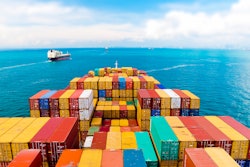
As we head into 2025, supply chains are on the cusp of yet another transformative year, driven by lessons learned from recent disruptions and growing demands for resilience, sustainability and efficiency.
In 2024, not a month went by where disruptions didn’t occur, from the Baltimore bridge collapse to the dockworkers’ strike at East and Gulf Coast ports. So, the priority for companies has become limiting the impact of these disruptions on their supply chain. While this next year promises to see significant developments, particularly in nearshoring strategies, sustainable fleet innovations and the real applications of artificial intelligence (AI) in logistics, the results of the election will also be a major driver in the development of some of these trends.
Here’s a closer look at my top predictions for the supply chain landscape in 2025.
Nearshoring takes center stage
The U.S. President Elect has openly said that “made in the USA” goods will be treated preferentially. This is leading to more North American companies adopting vertical integration as a strategy so they have more control over their supply chains and can increase profit margins in the long term (even if the infrastructure costs more to build in the short term). Businesses are waking up to the fact that it’s risky to rely solely on outsourced manufacturing for critical product components like semiconductors. Nearshoring can help diversify manufacturing and transportation by relocating production and sourcing closer to consumer markets. This allows suppliers and retailers to have more options when sourcing goods. This shift is largely driven by the desire to reduce lead times and minimize risks related to international production, including geopolitical tensions, currency fluctuations and shipping disruptions over both land and water.
Nearshoring allows companies greater control over operations, and the more control they have within their own walls, the better off they will be when disruptions happen. This approach enables businesses to adapt to demand changes and disruptions more quickly while also reducing the overall environmental impact due to a decrease in shipping distances and emissions. With technology and infrastructure investment, nearshoring offers companies an opportunity to reimagine their supply chains to achieve the sweet spot of just-in-time delivery and just-in-case resiliency.
The rise of hydrogen-fueled fleets
While electric vehicles (EVs) continue to play a major role in the push for greener supply chains, 2025 will likely see a pivot toward alternative fuel sources, particularly hydrogen. Hydrogen-fueled fleets offer a promising solution for industries that require longer-range, heavier-load transportation, especially in sectors like freight and logistics where EVs experience limitations due to charging.
Hydrogen-powered vehicles can refuel faster than EVs and provide a similar range, making them a strong contender for replacing traditional trucking fleets. Additionally, hydrogen fuel cells generate zero emissions at the point of use, aligning well with global decarbonization targets. While the shift will be gradual, hydrogen vehicles may gain traction in sectors where EVs fall short, particularly in rural or remote areas lacking EV charging infrastructure. However, advanced charging and refueling infrastructure will be needed regardless of the use of EVs or hydrogen-fueled fleets, and companies will need to account for this infrastructure development when building sustainable fleets.
AI's real role: Pricing and pattern recognition
AI remains one of the most-hyped technologies in supply chain management, yet people have been over betting on the impact of this tech. When it comes to the supply chain, a ton of steel is still a ton of steel, so in 2025, the applications of AI will see the most success when it comes to pattern recognition, pricing and optimizing vendors to enhance operational efficiency.
One of AI’s greatest strengths lies in processing large amounts of historical and real-time data to identify pricing trends and demand fluctuations. This capability is especially valuable in volatile markets, where rapid pricing adjustments can mean the difference between profit and loss. Additionally, AI-driven pattern recognition helps companies predict supply chain disruptions before they escalate, allowing for real-time adjustments in sourcing or inventory management to limit the impact of the increasing number of disruptions. As long as companies are focusing on practical and strategic uses of AI, they will be able to enhance their core operations in the new year.
The bottom line
The 2025 supply chain landscape will focus on balancing technological advancements and the need for resilient, flexible and sustainable operations. Nearshoring, hydrogen-fueled trucking fleets and more realistic applications of AI will define the future of supply chain management. Companies that focus on implementing these strategies over the next few years will strengthen their supply chains against consistent disruptions while making meaningful progress toward environmental goals. Companies who fail to embrace these shifts will continue to play catch-up to the impact of disruptions and changing consumer demands.



















